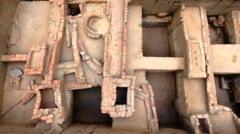Rakhaldas Banerjee, an Indian archaeologist and researcher, is credited with uncovering Mohenjo-daro, a significant archaeological site in present-day Pakistan, during the early 20th century. This site was the heart of the Indus Valley Civilization, which flourished during the Bronze Age across parts of South Asia. Banerjee's work in the Archaeological Survey of India (ASI) was marked by both brilliance and friction, as his independent approach often clashed with colonial protocols.
His journey into the world of archaeology began around 1910 when he joined ASI as an excavation assistant. By 1919, he had become a superintending archaeologist, leading explorations at Mohenjo-daro. His excavations from 1920 to 1924 revealed extensive urban settlements and artifacts that provided insights into one of the world’s earliest civilizations. Despite his triumphs, Banerjee’s accomplishments were clouded by controversies, including accusations of financial misconduct and his contentious relationship with superiors.
Historians today acknowledge Banerjee’s contributions to the discovery of the Indus Valley Civilization but note that his findings were overshadowed by John Marshall, the then chief of ASI, who allegedly claimed credit for the discovery. The lack of support from ASI and disputes over his management of funds hampered his legacy, as Banerjee's reports on Mohenjo-daro were never published.
Following his resignation from ASI in 1927 under a cloud of scandal, including involvement in an idol theft case, Banerjee continued to teach but faced personal and financial turmoil. He joined the Banaras Hindu University in 1928, but his life was cut short at age 45. Despite being a pivotal figure in Indian archaeology, Banerjee remains largely forgotten, exemplifying how contributions can become obscured by personal controversies and institutional politics.





















